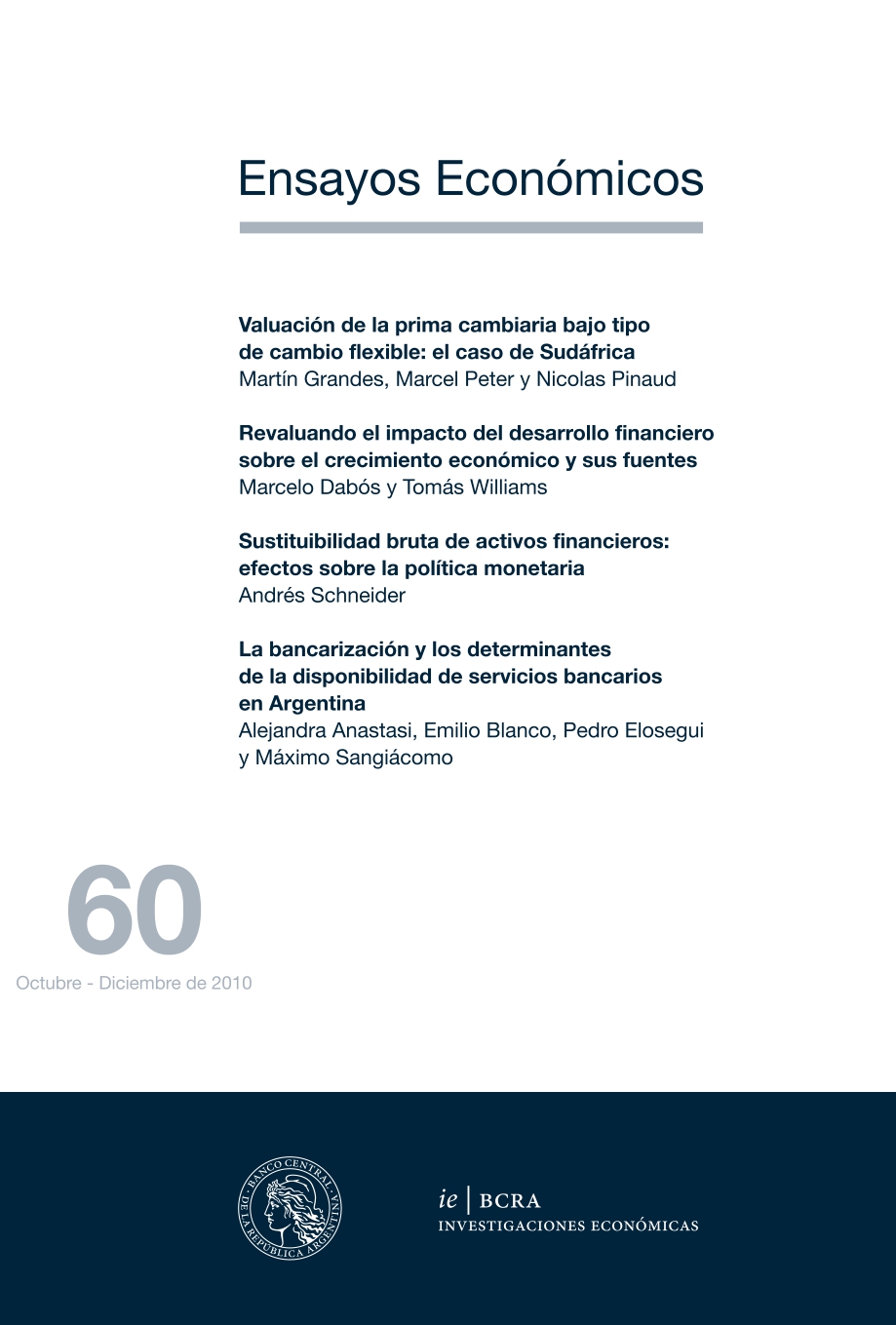Bankarization and Determinants of Availability of Banking Services in Argentina
Keywords:
Access To And Use Of Banking Services, Bankarization, Banking Regulation, LocalityAbstract
In this article, the availability and use of regulated banking services in Argentina is analyzed using a local database for the period 1998-2009. The evidence points to a low use of formal banking services–both in historical terms and compared to countries of similar economic development–as well as a marked discrepancy between provinces. The analysis of the determinants of the availability and use of banking services indicates a significant correlation with the number of inhabitants and the socioeconomic situation of the locality. These determinants differ depending on whether the entity is public, private, national or foreign, reflecting the different business profile of the different groups of entities. Thus, public banking is the one that shows the greatest presence in relatively smaller towns, foreign entities operate in urban centers, while national private banks show greater dependence on the provincial business environment. Finally, a Bayesian econometric analysis is carried out that shows the presence of spatial dependence in the use of banking services, which suggests the importance of extending their availability at the local level as a mechanism to promote a higher level of bankarization.
JEL classification: C10 ; C11 ; G21 ; G28




